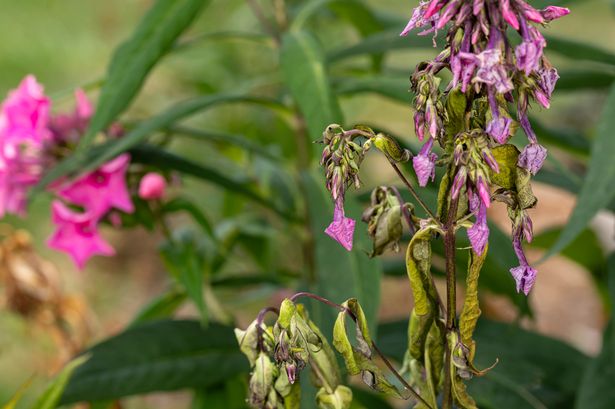Knowing the signs to look out for can make all the difference, gardening experts say A gardening expert has shared some distinctive symptoms to watch for(Image: Getty Images)
A gardening expert has shared some distinctive symptoms to watch for(Image: Getty Images)
UK households are being warned of five common summer plant diseases that can ‘ruin’ your garden if not treated or ignored. Summer is a great time for gardeners to see their blooms thriving and outdoor spaces coming to life, but plant diseases can quickly develop and undo the hard work.
Plant experts at GardeningExpress.co.uk are now urging gardeners to look out for key signs that plants could be affected to help catch problems early.
Humid weather and summer rain often leave areas damp and warm, creating ideal conditions for problems to arise, especially beneath dense foliage.
Some of the most common diseases include mildew, late blight, rust and root rot, and each have distinctive symptoms to watch for.
Sign up to our Manchester property newsletter here
Maintaining good plant hygiene, providing proper care, and ensuring adequate air circulation are key to keeping these diseases at bay.
Chris Bonnett, garden centre boss and owner of GardeningExpress said: “Summer is a great time for gardeners, but the combination of warm weather and humidity means plant diseases can quickly take hold if left unchecked.
“Knowing what to look out for and taking simple preventative steps, like improving air circulation and practising good plant hygiene, can make all the difference in keeping plants healthy and thriving throughout the season.”
Here are five of the most common summer plant diseases that UK gardeners should look out for:
 Leaf showing symptoms of downy mildew disease(Image: Getty Images)Downy mildew
Leaf showing symptoms of downy mildew disease(Image: Getty Images)Downy mildew
“Downy mildew is a fungal-like disease that often occurs in warm, humid conditions,” Chris says.
“It appears as fuzzy white growth on the underside of leaves, which can cause yellowing, spotting, stunted growth, or distorted plant development.
“To prevent downy mildew, ensure good air circulation around your plants, especially during warm, wet spells.”
Powdery mildew
“Powdery mildew is a fungal disease that forms a white, powdery coating on plant leaves,” explains Chris.
“It typically arises in high humidity and overcrowded planting conditions, which restrict airflow and hinder healthy plant growth.
“Prevent it by spacing plants appropriately and avoiding excessive moisture.”
Blight
“Blight most commonly affects potatoes and tomatoes and spreads by wind, thriving in damp, warm conditions,” the expert says.
“Typically occurring later in the growing season, it gained its name ‘late-blight’. The disease is characterised by black or brown leaf discolouration, and stems may also become affected.
“In tomatoes, watery patches often form, eventually rotting the fruit. To prevent blight, consider planting blight-resistant varieties, or, maintaining proper growing conditions and removing affected areas early to manage its spread.”
 Green leaves affected by a fungal disease rust(Image: Getty Images)Rust
Green leaves affected by a fungal disease rust(Image: Getty Images)Rust
“Not to be confused with the rust found on metal, plant rust presents as discoloured patches on leaves, often with orange, brown, or yellow pustules,” Chris explains.
“Rust is caused by various rust fungi that weaken the plant and its spores can spread quickly, so early action is crucial. You can manage rust by practising good plant hygiene and ensuring sufficient air circulation around your plants.”
Root rot
“Root rot is caused by overwatering, leading to roots decaying in waterlogged, oxygen-deprived soil,” says Chris.
“Symptoms include yellowing or wilting leaves, stunted growth, and dark, mushy roots. In order to prevent root rot, use well-draining soil and avoid excessive watering.
“If caught early, you can remove affected roots to stop the rot from spreading to healthy plants.”
Join the Manchester Evening News WhatsApp group HERE


Comments are closed.